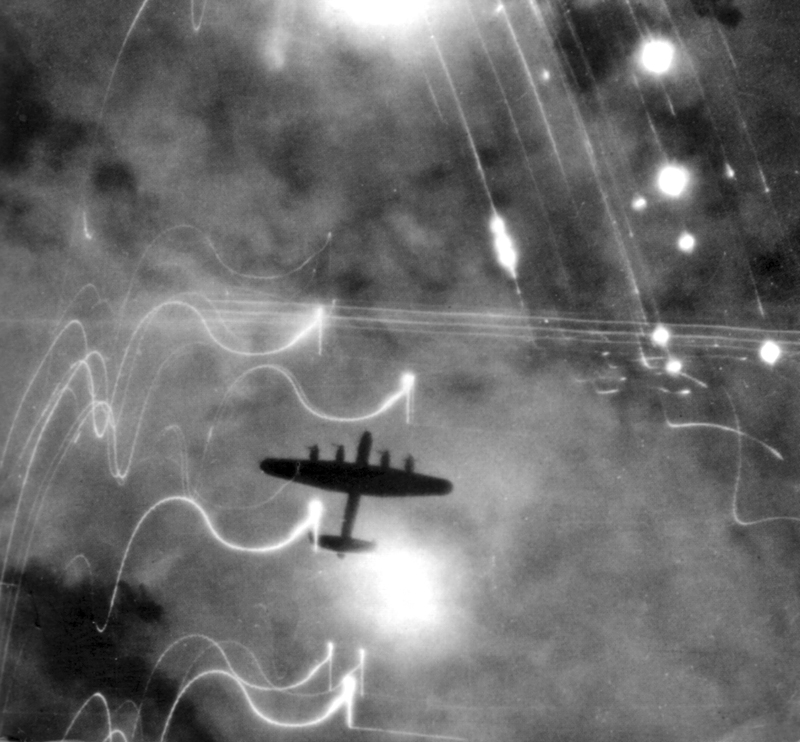
Victory Aircraft Ltd where the Avro Lancaster was built courtesy www.bombercommandmuseum.ca
VeRA, named after her call letters V-RA, was one of hundreds of Lancasters built in Canada. Made of 55,000 separate parts, she was designed and built by AVRO in Malton, Ontario. The four engine Lancaster had been "the best night bomber of the Second World War" according to a Luftwaffe commander. In 156,000 sorties. the Lancaster dropped two-thirds of the bombs on Europe during World War II. In fact, my father in law, Albert Jonasson, remembers hiding in his basement in Germany as the Lancasters zoomed overhead on their way to bomb Hamburg. The Lancaster was nicknamed "The Workhorse" of D-Day in 1944. Therefore, the Royal Air Force was intending to fly Lancasters, including VeRA, in the proposed invasion of Japan, named Operation Tiger Force, in 1945.

A Lancaster bomber over Hamburg, Germany courtesy
http://ww2db.com/image.php?image_id=3232.
http://ww2db.com/image.php?image_id=3232.
However, after the atom bomb was dropped on Japan, the country surrendered and the Lancaster was no longer needed for combat. Instead, What happened to the other Lancasters? Three thousand two hundred and forty nine of the bombers were lost during the Second World War. Many of those that survived were sold to Canadian farmers for a few hundred dollars. Still others were used to train air force crews and for search and rescue missions. VeRA fell into the latter category.

Lancaster bombers over England circa 1944 courtesy media.winnipegfreepress.com.
For fourteen years, VeRA had no purpose. Then, in 1977, she was purchased for $10,000 by the Canadian Warplane Museum in Hamilton, Ontario. My husband's cousin, Peter Jonasson, who used to put together model airplanes as a kid, and whose father fought in the Second World War, found out about the purchase of the Lancaster bomber. He introduced himself to the crew that intended to restore the airplane. They loved his enthusiasm and appreciated his knowledge of wiring, and welcomed him aboard to help with Vera's restoration.
In 1988, the bomber was fully restored and ready to fly. Some people expected about 200 specatators on the day of its first flight. Instead, 20,000 spectators, including Peter Jonasson, lined the runway at Hamilton Airport the day that if first flew after 25 years of sitting on the tarmac. VeRA took its place in the Warplane Heritage Museum, "the heart of the museum". She was mounted as a World War II memorial outside the Canadian Legion in Goderich.
Lancaster bomber at Canadian Warplane Heritage Museum courtesy upload.wikimedia.org.
Today, VeRA remains only one of two airworthy Lancaster bombers in the world. This past summer, VeRA was reunited with the other Lancaster for a seven week airshow in Britain. She came home, just in time for Peter's daughter's wedding to take her place behind the head table. Congratulations, Crystal and A.J.! May your marriage be as strong and as enduring as the Lancaster bomber!
.jpg)
No comments:
Post a Comment